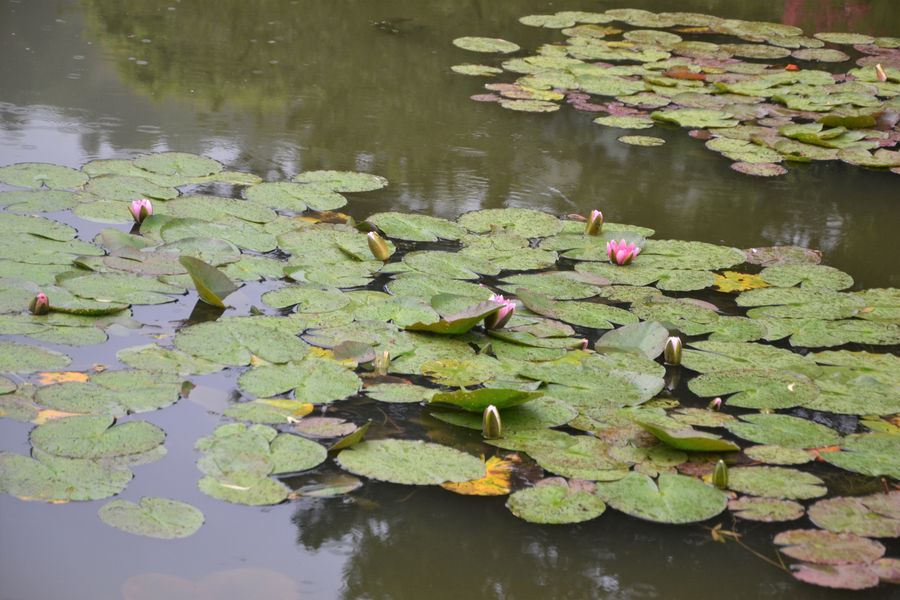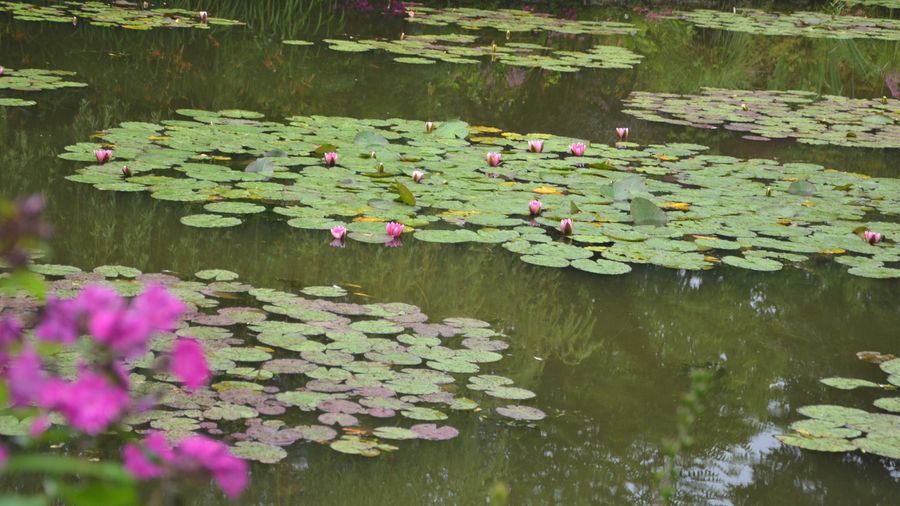Interviews
The secrets of water lilies…
The undeniable stars of summertime, water lilies are fascinating plants that raise a multitude of questions. Dive into the world of Claude Monet’s beloved flowers, with our head gardener Jean-Marie Avisard…

How are the water lilies cared for while the foundation is closed for winter?
In the winter, water lilies develop rhizomes which are hidden at the bottom of the pond. They are dormant. It is our job to protect them from very low temperatures. To prevent frost from reaching them, the pots need to be submerged deep enough in the water. The water lilies begin to sprout again in the spring, once the temperature of the water rises to 16°C. The warmer the water, the faster they grow. The smaller the pond and the faster the water heats up, the more the water lilies will take over!
While the plants are in season, there is no shortage of work to be done on the pond…
That’s true, because everything grows so quickly! We have to remove a lot of foliage to ensure there are as many blooms as possible. The idea is also to perpetuate the spirit of Claude Monet’s paintings, with those splotches of water lilies on the water. So, we need to make sure they don’t cover the whole pond! That’s why a gardener has to cut off leaves every day, but also trim the other aquatic plants…
Do you ever divide the rhizomes?
Yes, if a water lily grows too big for the tub where it is planted. We also do it when nutria pull up a water lily by the root. Then, we have to divide a rhizome and replant a new water lily where the old one was ripped out. This can be done at the end of the first frost but also throughout the season.
Are water lilies susceptible to disease?
Very few diseases affect water lilies. They are very rustic and robust. The number one risk comes from nutria, which find its roots to be a real delicacy!
What is the life cycle of a water lily blossom?
The flowers open and close every day. If it is warm and sunny one day but grey and rainy the next, they will still open up, because they remember the weather from the day before. The opposite is also true: if it’s grey one day, they’ll awaken later the following day! The blossoms then close up for the night. They last a little longer than a week before being replaced by other flowers. They continuously regenerate. And the warmer the weather, the more they grow!
What colours of water lilies do you have?
We have yellow, white and at least 10 varieties of pink water lilies. And we have just reintroduced a purple – almost blue – variety, but they are less hardy than the others! Back in the day, Claude Monet tried to plant a blue lotus in his pond. He quickly gave up on the idea though, because it proved to be very complicated, as the plant had to winter in a greenhouse!
Do you always order your water lilies exclusively from the Latour-Marliac nursery in the heart of the village of Le Temple-sur-Lot?
Yes, we have always bought our water lilies from them. In fact, they were Claude Monet’s supplier, too! And they are still one of the largest producers in Europe.
To prevent any cross-pollination, Latour-Marliac created sterile varieties many years ago. Do we still have those same, unchanged varieties today?
Yes, that is still the case today. Our water lilies are arranged to bloom in a mix of colours. But they don’t intermix genetically! During the restoration work, the pond was dredged, the mud was hoovered up, and everything was replanted anew. All the same, we can assume that we still grow varieties which Claude Monet used in his day!
Does Fondation Monet regularly add to its collection of water lilies?
We recently bought some more, because we wanted to introduce a new colour. But the classics are very hardy and produce abundant flowers. Unless there is a major freeze or nutria attack, those plants will last for many years to come!
In 2019, the genome sequencing of the blue water lily proved that water lilies and lotuses are amongst the oldest lines of flowering plants!
That doesn’t surprise me, given how they behave in the garden! Water lilies are invasive, hardy and never get sick. They would take over the whole pond if we didn’t stop them!
Claude Monet spent a long time contemplating his water lilies before it occurred to him to paint them. Do they inspire the same sense of serenity in you?
Yes, I find that this water garden gives off a true sense of tranquillity, conducive to quiet contemplation. It’s very soothing. And that’s part of what visitors are looking for when they come to Giverny…















